Though sideboards—also known as buffets—were originally created as additional serving surfaces for dining rooms, they’ve come a long way, and we’re convinced that they’re one of the most useful pieces around. Thanks to their wide-ranging styles and versatile functionality, they make a great addition to every room of the house. See how they shine in bedrooms, offices, and beyond.
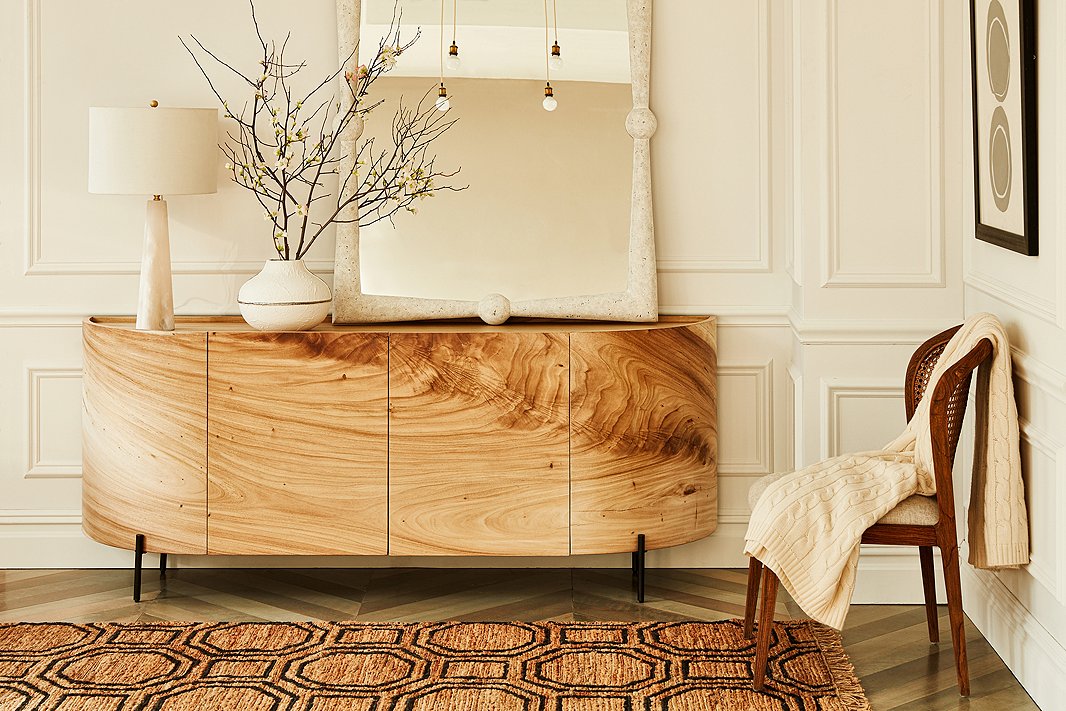
Shown above: the Bryn sideboard, which has shelves behind its doors; the Scarlett resin wall mirror; and the Hexile jute rug.
In Your Hallway
Hallways are often the no-man’s-land of home design: neglected spaces that receive a painting on the wall—maybe. If yours is wide enough, invest in a narrow sideboard, which will make your hallway look as considered as the rest of your house and can moonlight as storage for clean sheets and towels.
In Your Bedroom
Dressers tend to be the go-to storage solution for most bedrooms, but a sideboard can tuck into low-slung spaces such as under a window sash while still giving you plenty of places to stash your stuff. Many include a combo of drawers (for socks and undies) and adjustable shelves (for jeans, shirts, and sweaters), and all provide a pretty surface for displaying books, baubles, and trinkets.
In Your Office
Sideline those standard filing cabinets and work in a sideboard instead. The drawers can corral loose bits and bobs such as paper clips and boxes of staples, while the shelves can be sized for folders. And anywhere in your house, a sleek, simple sideboard is the perfect counterpart to a busy salon-style art wall.
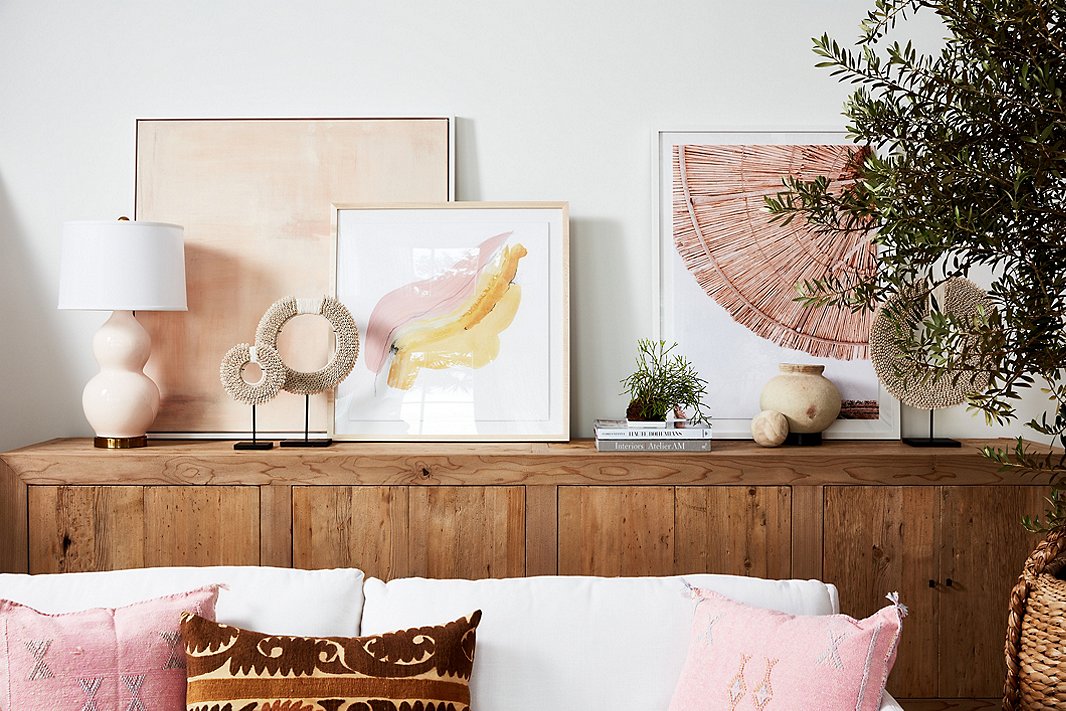
The Annia is a six-door version of the above sideboard. Also shown above: cowry shell necklaces on stands, Pink Abstract I, Breath I by Rebecca Stern, and Mykonos Umbrellas by Natalie Obradovich.
In Your Living Room
When it comes to your family room, the sideboard can function in a million-and-one ways: Set your TV on top and hide your electronic equipment within. Arrange it back to back with a “floating” couch (one that’s not flush against a wall) in an open-plan room to help define multiple spaces. Or place it under a hanging mirror or painting to create a stylish vignette.
In Your Flex Space
With their length and clean lines, sideboards can help define hard-to-style areas like foyers and under-the-stair nooks. And unlike their cousin, the long and lean console table, sideboards significantly up your storage capacity.
History Lesson
Sideboards first appeared in the latter half of the 18th century. Their predecessors were long tables, sometimes topped with marble, that were primarily used in dining rooms to hold platters of food. It was Scottish architect and designer Robert Adam who added cupboards to each end of the table, resulting in the earliest version of the sideboard. Soon after, other well-known cabinet makers and furniture designers such as Thomas Shearer modified Adam’s design, and the sideboard as we known it today was born.
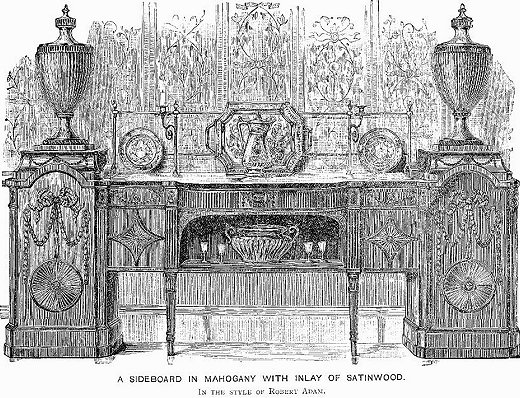
From 1893’s Illustrated History of Furniture, from the Earliest to the Present Time by Frederick Litchfield.
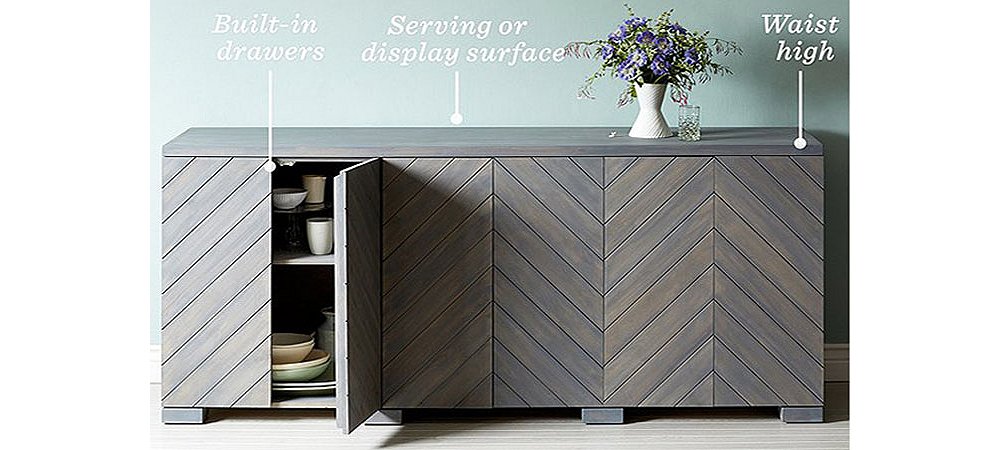
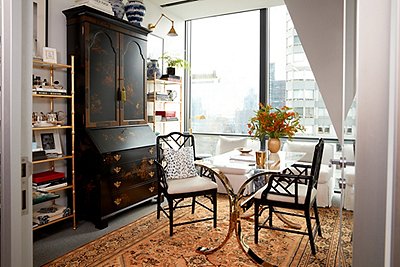
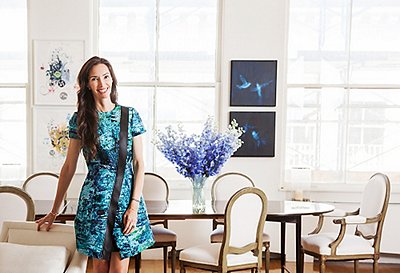

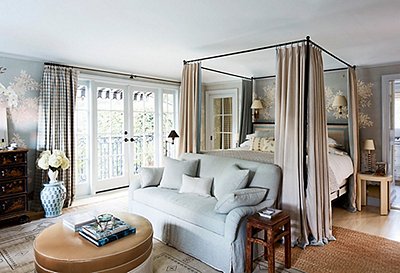
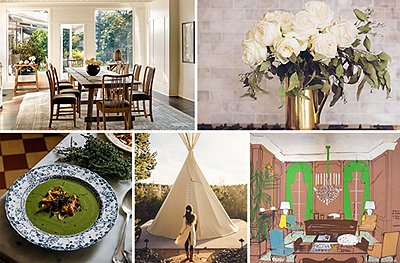
Join the Discussion